
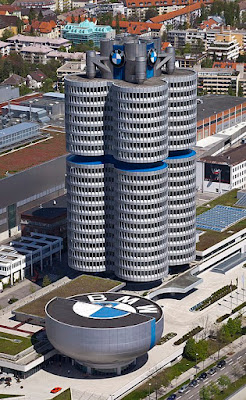
The official website of BMW is,
The official website of BMW group is,
The BMW name stands for Bayerische Motoren Werke GmbH. BMW was created in 1917 from the Munich firm Rapp-Motorenwerke. The company was incorporated into Knorr-Bremse AG in 1920 before being refounded as BMW AG in 1922. It was the successor of Bayerische Flugzeugwerke AG, founded in 1916. 1916 is therefore considered BMW’s founding year.
As well as BMW producing their own vehicles, BMW owns and produce Mini's and Rolls Royce's, but also they design interiors for trains and aeroplanes. BMW's headquarters is locked in Munich, and they produce motor vehicles in Germany, the United Kingdom, the United States, Mexico, Brazil, China, India and South Africa.
Nick names of BMW
“Bimmer,” “beamer” and “beemer” are all common nicknames for BMW vehicles.
Beamer name comes from BMW sports motorscyle which launch in 1960 and famous all our the world in 1970 and this name got so popularity which alwase famous for BMW car as well.
The name has now been embraced by car fans around the world, even in Germany.
Simply The nickname “bimmer” for BMW cars originated in the US. It was derived from “beemer” or “beamer,” names for BMW motorcycles that were first coined in the UK in the 1960s and later spread across the globe.

.webp)
this name got so popularity which also famous for BMW car as well.
The name has now been embraced by car fans around the world, even in Germany.
Chinese call a BMW a precious horse
In the 1990s, “bimmer” was joined by another nickname for BMW automobiles in China: “bao-ma” (bao rhymes with cow). Translated literally, this sobriquet means precious horse.
History of BMW
The acronym BMW stands for Bayerische Motoren Werke GmbH, which roughly translates to the Bavarian Engine Works Company. The name harks back to the company’s origin in the German state of Bavaria. It also indicates BMW's original product range: engines for various applications.
Today's BMW AG has its origin in Rapp-Motorenwerke GmbH, which began producing aircraft engines in 1913. During the First World War, Rapp supplied the air force of the German Empire. At that time, automobiles had not yet broken through into the mainstream. If you wanted to travel long distances on land, you went by train.
Rapp Motorenwerke becomes BMW
Rapp Motorenwerke had its headquarters in the Bavarian capital, Munich – as did the factory where the engines were fitted into the aircrafts, Gustav Otto Flugmaschinenfabrik. When the Otto company went bankrupt in 1916, it became Bayerische Flugzeugwerke AG (BFW). Shortly afterwards, Rapp also changed its company name: In 1917, the company became known as Bayerische Motoren Werke GmbH. BMW’s origin in the Rapp company can also be seen on the logo.

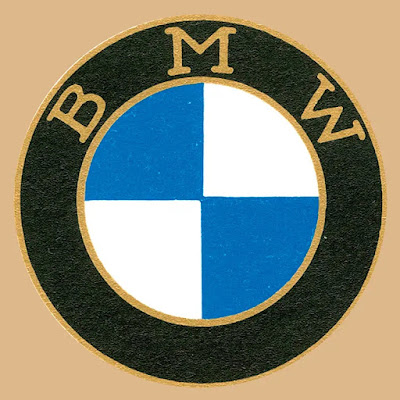
The BMW name vanishes for a time
In August 1918, Bayerische Motoren Werke GmbH became a stock corporation. But the end of the First World War brought a halt to the construction of aircraft engines, as the Treaty of Versailles forbade Germany from building them. So BMW shifted its focus to railway brakes and built-in motors. This was so successful that the Berlin-based brakes company Knorr-Bremse AG took majority ownership of BMW in 1920, integrated the company and relocated to Munich. Bayerische Motoren Werke GmbH as an independent company disappeared temporarily from the scene – albeit not for long.
.webp)
BMW AG in 1970S. Munich, Germany.
BMW founding, take two!
In 1922, the major investor and aircraft construction pioneer Camillo Castiglioni was the main shareholder of Knorr-Bremse AG. He bought the BMW company name and took over engine construction operations, along with the employees, production facilities and company logo, and transferred everything to BFW, Bayerische Flugzeugwerke AG.
In the same year, the company moved into BFW’s factory buildings in Lerchenauer Strasse and changed its name to Bayerische Motoren Werke AG. And that’s how the BMW name found its way into the commercial register for a second time.
All this means that BMW AG is the legal successor of BFW. The corporate headquarters and parent plant of the BMW Group are still located at the former BFW site in Milbertshofen, Munich to this day. And there’s something else the aircraft manufacturers bequeathed to BMW AG, too: BFW’s founding date of March 7, 1916 is considered to be BMW’s official birthday.
The Evolution of Bmw
BMW was first founded all the way back in 1916 by Camillo Castiglioni, Franz Josef Popp and Karl Rapp. Their first product was aircraft engines for use in World War I.

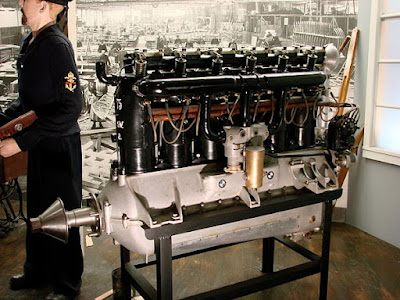
However, since German companies were banned from making planes and engines after World War I, they were forced to try something new. They then started to manufacture motorcycles, with their first motorcycle being the BMW R 32 in 1923.
BMW became an automobile manufacturer in 1928 when it purchased Fahrzeugfabrik Eisenach, which, at the time, built Austin Sevens under licence under the Dixi marque.
Their first car was a Dixi, rebadged and called a BMW 3/15, which went on sale in 1929.
.jpeg)
.jpeg)

Throughout the 1930's, BMW started to broaden their horizons, and started to manufacture sports cars and luxury cars.
The kidney grille evolution started in 1933, with the launch of the BMW 303. The 303 represents 2 milestones: it was the 1st vehicle to have a radiator grille, with the characteristic kidney shape; and it was BMW's 1st 6-cylinder model.


BMW managed to create the world's fastest motorcycle in 1937 - it could reach a top speed of 173.7mph which makes the record at that time.
.jpeg)
Mercedes-Benz Attempt a Takeover
After world war ll Due to a lack of sales, BMW almost went bankrupt in 1959, where their rival, Mercedes-Benz, tried to takeover! But, a large investment from private investors allowed the company to survive.
BMW and Lamborghini agreed to make a race car in the 1970's, but Lamborghini pulled out so BMW ended up making the M1 instead - BMW's first 'M' car.
The ultimate driving machine has established M as the most powerful letter in the world. The roots of this legacy extends further back than what most might realise.
Founded in 1972 with just 35 employees, the BMW M division has since pursued its goal of creating the world's best sports car with relentless passion.
Two years later, BMW introducted their first electric car. However, performance was very lacking, and the battery would only last 20 minutes.
.jpeg)
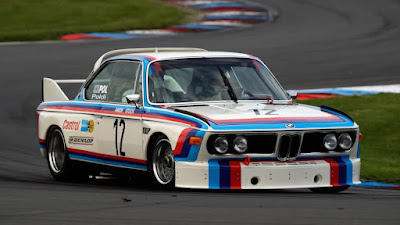
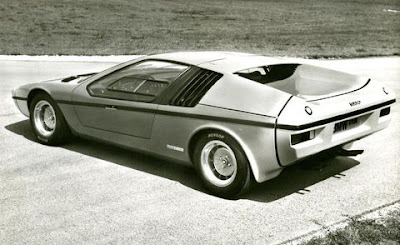

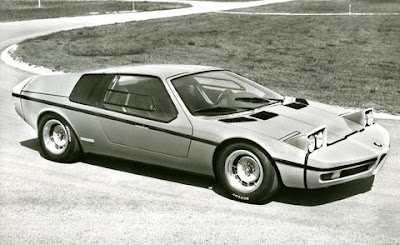
Production of M series are still continue successfully with different designs and shape vartaions like sedan, coup and convertible etc.
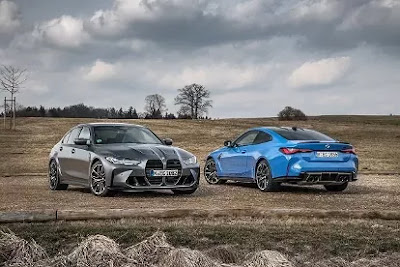
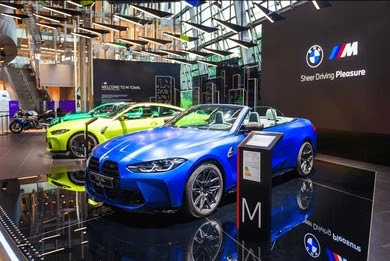
Read on to trace the remarkable course of history M has traversed up till today.
BMW other models


.jpg)
%20(1).jpg)
BMW Electric cars
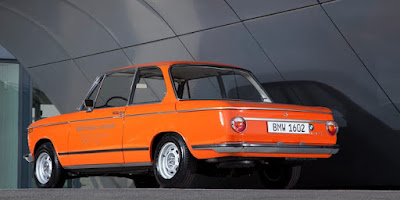

.jpeg)
Launch of the BMW iX5 Hydrogen Piolt Fleet
The wait is over
.jpeg)
.jpeg)


.jpeg)